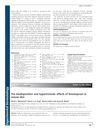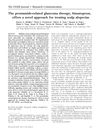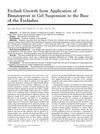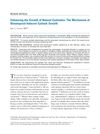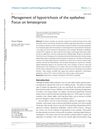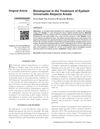Recent Progress in Prostaglandin F2a Ethanolamide (Prostamide F2a) Research and Therapeutics
January 2013
TLDR Bimatoprost treats glaucoma and promotes hair growth, with potential for more medical uses.
Prostamide F2a research stemmed from the pharmacology of the antiglaucoma drug bimatoprost and the conversion of endocannabinoid anandamide by COX-2 to prostaglandin ethanolamides. Bimatoprost's pharmacology closely matched prostamide F2a, and the development of selective prostamide receptor antagonists helped differentiate its effects from FP receptor-mediated effects. Bimatoprost is used to treat glaucoma and eyelash hypotrichosis and has shown to stimulate hair growth in human scalp follicles and mouse pelage hair. Additionally, it has potential for reducing fat deposition by targeting preadipocytes. The discovery of prostamide/PGF synthase highlighted its high expression in the central nervous system, identifying prostamide F2a as a nociceptive mediator in the spinal cord. Bimatoprost has thus provided therapeutics in glaucoma and hair growth, with potential for further medical applications using prostamide agonists and antagonists.
